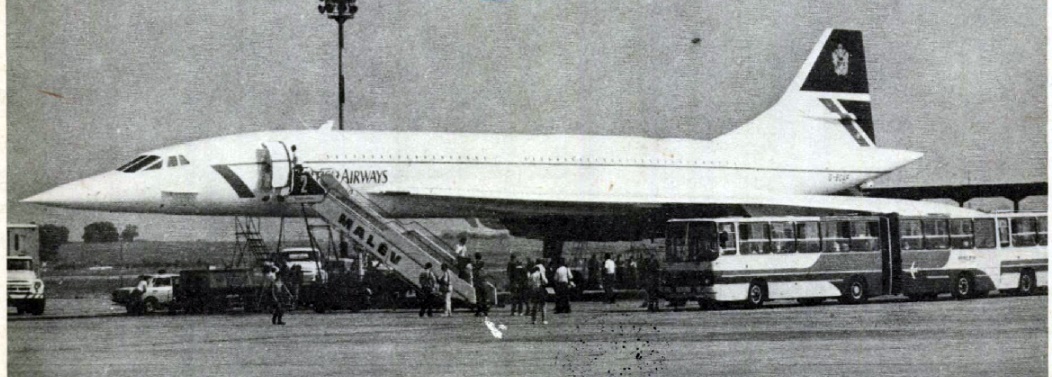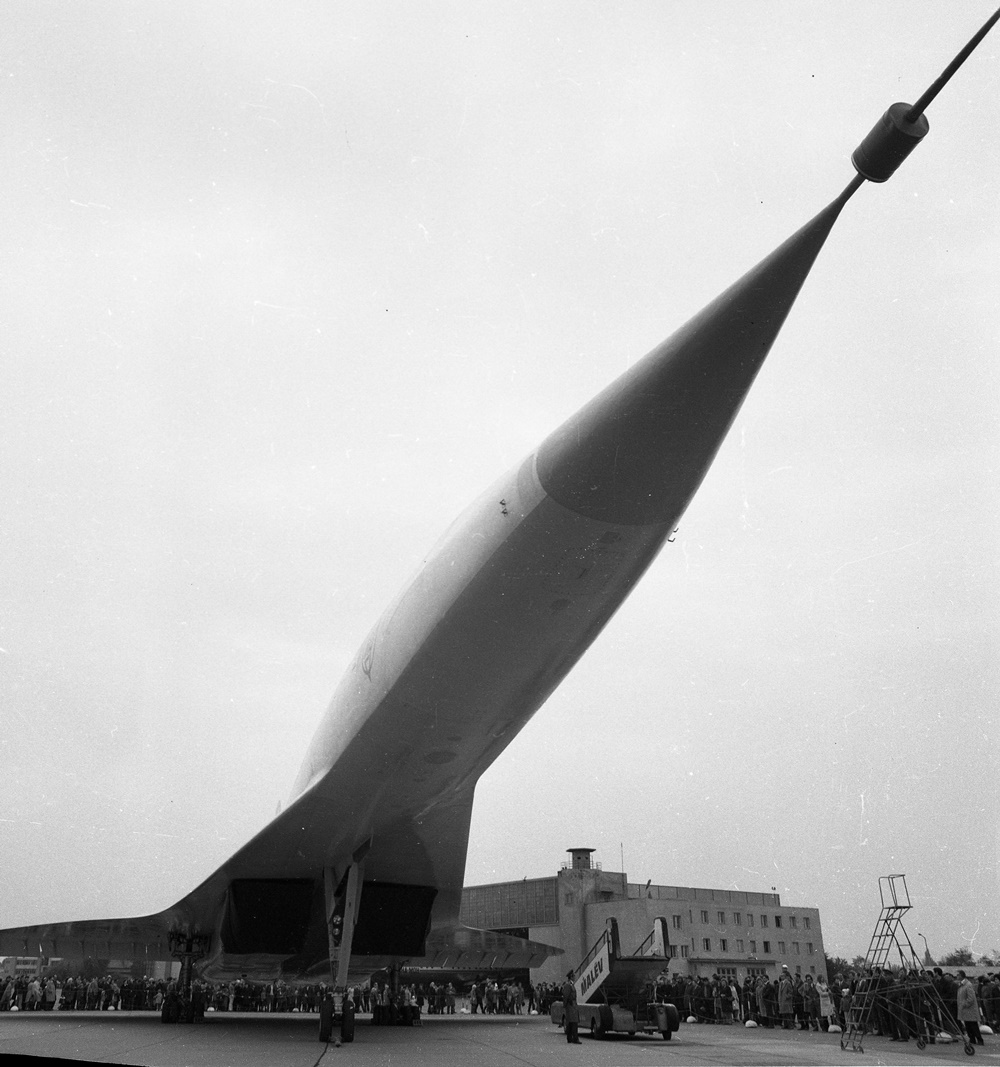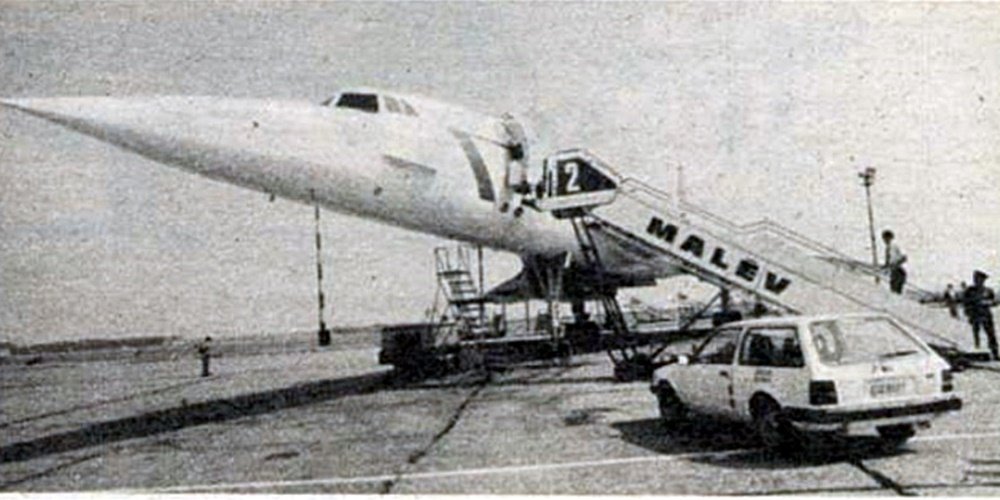The arrival of the British–French superplane garnered significant interest, and unsurprisingly the Hungarian press also reported about the event in detail. Magyar Hírlap wrote on 16 September 1985:
"Never before have so many cars been parked at Ferihegy. Masses also flicked from the buses around 10 o'clock to see the Concorde, which was delayed - not because it is a slow plane – but because it was late out of London."
A Concorde first visited Budapest on 14 September 1985. During the flight, the plane took a detour to the North Sea to ensure that its passengers could experience flight at twice the speed of sound. Passenger planes cannot fly over the speed of sound above the continent – their speed is limited to 900 km/h. As a result, the fastest passenger plane ever created completed the London–Budapest trip in 3 hours 20 minutes, an hour slower than the usual London–Budapest flights.
However, this was not a normal flight. Concordes were designed to cross oceans. The flight was chartered, and 100 British tourists onboard came to Budapest for a one-day lightning visit.

The Concorde in Budapest (Photo: Haditechnika, 1986 iss. 1.)
The trip was organised by British Airways, Good Wood Travel and the London office of the Hungarian IBUSZ. The goal was to bring well-off British tourists, mainly pensioners, who had never been to Hungary to Budapest. The long-term hope was to lure the visitors back for a longer stay, and IBUSZ went out of its way to give them differential treatment. A private bus awaited the flight, and passengers were also rushed through passport control.
They were greeted as a ceremony in the Gellért Hotel, which was followed by a tour of the city, including a boat ride and a five-course lunch accompanied by traditional gipsy musicians and a folklore show during their 10-hour stay. Each visitor paid 729 pounds for the trip (much less than the 2–3000 a transatlantic flight cost). However, for 729 pounds the visitors received more than a simple day trip to Budapest, as the Magyar Hírlap wrote:
"The service was of course first-rate: the price not only included complete service, but various personalised gifts, champagne and a supersonic club membership card."
Many more people filled the terrace of the Ferihegy terminal waiting for the plane. A select few journalists and aviation professionals were even allowed to board the plane.

The plane brought 100 passengers but was greeted by thousands of onlookers (Source: Repülés, 1 November 1985)
But why was a Concorde such a sight? As part of the Soviet block, a rarer "western" car, such as a Porsche or an Alfa Romeo could cause a stir. A Ferrari was simply a sensation. Concorde was the most advanced means of civilian transport in the world, originally not intended for use above the continent, and thus would never have visited Hungarian as a scheduled flight. Furthermore, very few people could travel West, and thus barely anyone would have seen the plane on the tarmac in London or Paris.
On the other hand, the dying socialist economy of the 1980s desperately needed hard cash, of which Western tourists were one of the best sources. (An apt illustration of the currency shortage is the fact that a Hungarian citizen could only request permission to purchase exchangeable currency every three years.) The managers of Hungarian tourism saw a stable market in well-off English pensioners.
But why bring the Concorde to Hungary? While being a miracle of technology, operating Concorde was a commercial failure. Thus its operators tried everything to promote the plane. The all-in-all four such round day trips to Budapest in the second half of the Eighties were a part of this effort. Before flying to Budapest, Concorde had only flown to Moscow on a similar trip.

Not Concorde, but a TU-144 in Budapest in 1972 (Photo: Fortepan, Tamás Urbán)
Concorde, however, was not the first supersonic passenger jet to visit Hungary. It was preceded by the TU-144, the Soviet Union's supersonic jet that was so similar to the British-French design that it was nicknamed Concordski. The TU-144 visited Budapest in 1972 but without passengers, as the plane only flew passengers from 1975 for a short time. The TU-144 was not a good plane or a mature design, and only carried passengers a total of 55 times. It was retired for service in 1978 due to its unreliability.
_on_display_at_Aerospace_Bristol_8August2019_arp.jpg)
The Concorde that visited Budapest is now on display in a museum (Photo: Wikipedia, Adrian Pingstone)
The Concorde that visited Budapest had the tail number G-BOAF-216 and was the youngest member of the Concorde fleet, and in 1985 the plane held the record for the fastest New York–London flight with 2 hours 56 minutes. It was also the last Concorde to fly on 26 November 2003. Today it is on display at Filton Airport and can be visited by anyone.
Cover photo: The fastest passenger plane in the world in Budapest (Photo: Képes Újság, 28 September 1985)





































Hozzászólások
Log in or register to comment!
Login Registration